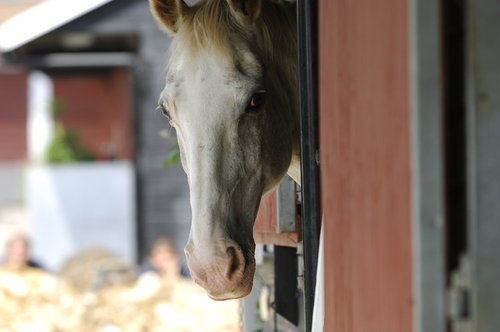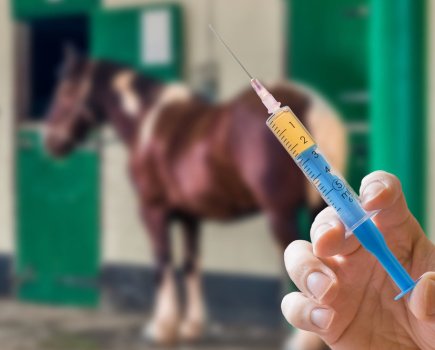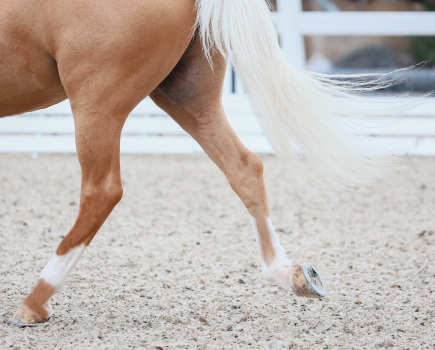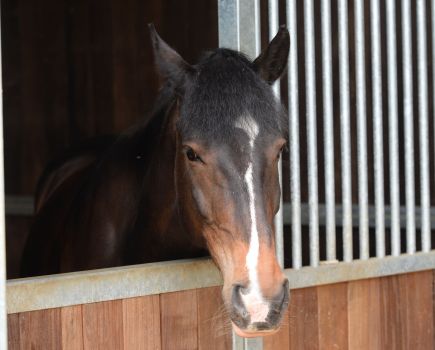Horse ringworm is a common fungal skin infection which, despite what its name suggests, isn’t caused by a worm but by a type of fungus and usually requires treatment. Ringworm is a highly contagious skin condition that can be easily spread from horse to human, as well as from horse to horse. Other animals can suffer with ringworm too — cats, dogs, cattle etc — and it is a troublesome horse health issue because it is so easy to catch and pass on.
Largely to blame for causing horse ringworm are the microsporum and trichophyton species of fungi, which are expert in spreading their spores via direct horse-to-horse contact, or through shared tack, grooming brushes, bedding and other surfaces including stable doors and fencing.
As with most diseases of this type, very young and very old horses are more likely to develop ringworm as their immune systems are generally less effective, though if a horse does catch it they will develop a natural immunity that will protect them. This doesn’t mean they’re necessarily protected for life, but they will be less likely to get it again in future.
How are horses affected by ringworm?
Mildly affected horses with ringworm will usually be well in themselves, though some may attempt to rub the ringworm patches and the condition can make them feel sore and itchy. Left untreated, ringworm can start to damage the coat and can take up to several months to ‘self-cure’, occasionally developing into a serious health problem. Therefore, horse ringworm treatment is usually the best course of action — more on what this involves below.
Most cases of horse ringworm soon recover with correct treatment and good stable management, and the hair will grow back within a month or so. As the disease is often spread via infected tack, it’s common to see ringworm patches in the saddle or girth region, though it can affect any part of the horse’s body.
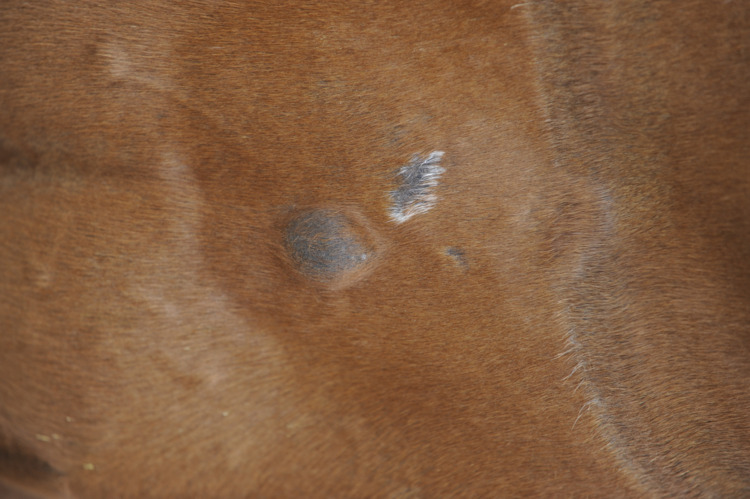
Ringworm patches can be any shape and size
Symptoms of horse ringworm
This skin condition may develop in a characteristic ‘ring’, but ringworm patches can in fact be any shape and size, often starting as a raised tuft of hair. It’s common to see the spots in a cluster (ie several close together rather than scattered over the horse’s body), with the affected skin becoming scurfy and scabby, leading to patchy hair loss.
Areas affected by horse ringworm may be sore and itchy, and if left untreated it can spread to cover quite a wide area of the body.
Just to confuse matters, ringworm symptoms can mimic other skin conditions and your vet may suggest a skin scrape to confirm its diagnosis. This can then be examined under a microscope to look for any ringworm spores, and cultured (which is more sensitive in picking up the disease). However, as the fungi that cause horse ringworm are slow-growing, treatment is usually started on suspicion before the results are available.
Preventing horse ringworm
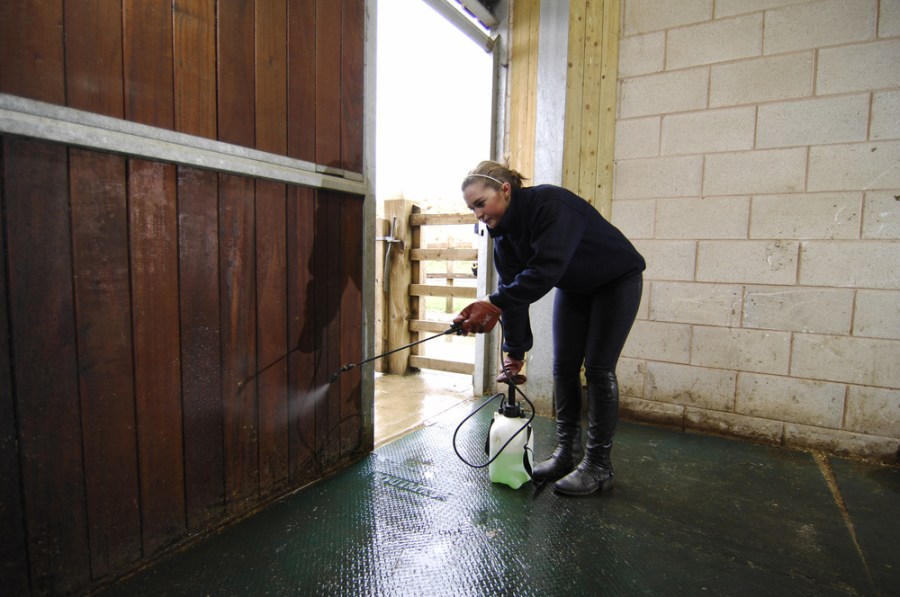
Disinfecting a new stable is a key part of preventing ringworm
The funghi responsible for horse ringworm are hugely resistant to heat, cold and other environmental factors, which means they can stick to stable doors, fencing, tack and grooming brushes for weeks or even months. Added to this is the fact that they can survive on a horse’s skin for up to three weeks before signs of ringworm start to show, allowing the disease quite a lengthy period of time to spread its wings — or at least its spores.
There several things you can do to help prevent yourself or your horse (and other pets/animals) getting ringworm, including:
- Good stable management is the key to both preventing ringworm and limiting its spread, because it is so easily passed between horses and people.
- Disinfect a new stable before your horse moves in. This is a wise precaution. You should also disinfect any stables and areas (such as fence posts) touched by a horse you know has had ringworm. Look for a product that specifically targets ringworm, such as Virkon S, which is available in tablet, sachet or powder form. You can buy a 1kg tub from Amazon UK here for £23.73. If you’re in the USA, it’s available here for $35.37.
- Isolate any new horses that come on to your yard for a sensible amount of time — ideally between two and three weeks. This is a sensible precaution not just in the prevention of horse ringworm, but other contagious diseases like equine flu and strangles. Only allow a new horse into the main yard when you are certain they are disease free. This isolation period gives you time to carry out a worm egg count too before introducing them to your pasture.
- Avoid sharing tack, grooming brushes and rugs with other horses, especially if you don’t know their history. If a horse is isolating, ensure their kit is stored separately and that as few a people as possible have contact with the horse until they get the all clear.
Horse ringworm treatment
If your horse is diagnosed with ringworm, your vet will prescribe treatment in the form of an antifungal wash and/or as an oral medication. Grieiofulvin is an antifungal medication that is used to treat fungus skin infections like ringworm in people as well as horses.
Your vet may also suggest you use one of a number of fungicidal shampoos on the market, such as the Aqueos’ range of horse shampoos and disinfectant tack cleaners. Whatever is prescribed, areas covered in thick scabs will need removing gently with a nylon brush that will need disinfecting afterwards. Some vets will advise clipping affected areas, but clipper blades must be carefully disinfected afterwards.
As the fungus loves moist areas of skin, it’s wise to towel your horse dry where necessary and help prevent the condition taking hold further. Everything they touch, and all of their gear, must be kept well disinfected as well.
A horse with ringworm should be kept in a paddock or stable where they can’t make direct contact with other horses. Anyone who handles them should wear gloves, and they should change their clothes before handling any other horses on the yard. If you become itchy or have any red sore patches, go and see your GP and tell them your horse is being treated for ringworm.

